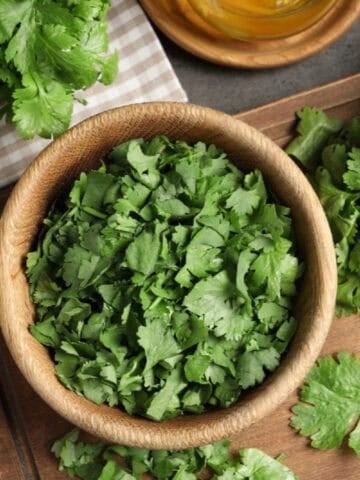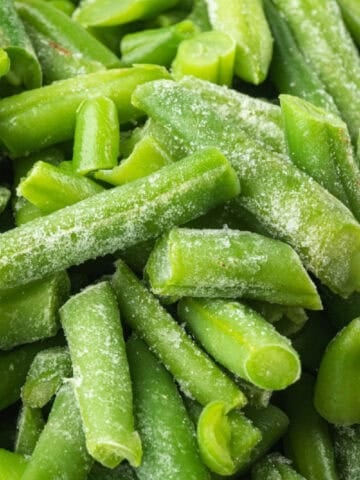Maggi seasoning is a savory, meaty-flavored condiment enjoyed in numerous Asian dishes. Its delicious taste enhances everything from soups and stews to noodle preparations and fried rice. The seasoning’s thick, smooth consistency gives the ingredients a tasty coating. As a basic component in many home recipes, Maggi's popularity arises from its flexibility in which a simple sprinkle conveniently amplifies the depth of flavor. However, if you find yourself without Maggi seasoning sauce, there are suitable alternative options available. In this blog post, we'll explore some of the best Maggi seasoning substitutes that can elevate your dishes and add that coveted savory kick.

Jump To
Understanding Maggi seasoning
Before we explore alternatives, let's take a brief look at Maggi seasoning. Maggi seasoning sauce is a beloved condiment with a rich history dating back to the late 19th century. It has become a staple in kitchens worldwide. Developed by Julius Maggi, this dark brown liquid is renowned for its umami-rich profile. Its unique blend of umami, saltiness, and depth of flavor has made it an essential ingredient in various cuisines, particularly in Asian and European cooking. The original Maggi seasoning sauce contains ingredients like wheat protein, yeast extract, and the ever-controversial monosodium glutamate (MSG). Its widespread popularity has led to various regional versions, each offering a slightly different taste.
It is a dark, soy sauce-like liquid made from a combination of fermented wheat proteins, salt, sugar, and various flavor enhancers. Maggi seasoning is known for its strong umami flavor and is commonly used to add depth and richness to a wide variety of dishes, including soups, stews, marinades, sauces, and stir-fries. It's especially popular in Asia and is often used as a seasoning in place of soy sauce or Worcestershire sauce. Now, let's take a look closer at the following Maggi seasoning substitutes:
1. Soy sauce
Traditional soy sauce serves as one of the most suitable substitutes for the Maggi sauce. Produced through fermentation of soybeans and wheat protein, it possesses a savory-salty profile and dark hue comparable to Maggi. Specifically, the light soy sauce substitute is preferred as it maintains a thinner and more temperate flavor profile relative to darker variations. Regular soy sauce can interchangeably replace Maggi at 1:1 and imbue strong flavors into soups, stews, noodles, grains, and additional culinary preparations. You can also combine it with tomato paste for even better results. It’s commonly available in most Asian supermarkets.
Regular soy sauce, particularly the dark variety, can be a great Maggi seasoning substitute. Its salty and savory profile makes it a versatile option for a wide range of dishes.
2. Worcestershire sauce
With its complex blend of key ingredient items like anchovies, tamarind, garlic, onions, and spices, Worcestershire sauce beautifully mimics Maggi seasoning’s robust umami and unique flavor. Start with half the amount called for, as it has a bolder, more pungent taste than Maggi’s dark brown liquid sauce. The thick, syrupy texture also matches Maggi liquid seasoning well. You can use Worcestershire sauce along with other condiments for enhanced savory flavor in beef and pork dishes, sandwiches, stews, marinades, and more. Its little bit of extra intensity makes it best suited for heartier recipes.
Worcestershire sauce is one of the closest substitutes for Maggi seasoning. With its blend of fermented anchovies, vinegar, and various spices. Worcestershire sauce provides a savory depth that mirrors the umami notes of Maggi.
3. Fish sauce
Made by fermenting anchovies or similar small fish with salt, fish sauce boasts naturally concentrated levels of glutamates that deliver a savory punch almost identical to Maggi seasoning. Substituting, use the same amount of this salty sauce as Maggi, but be aware of its distinctly fishy aroma. Its extra salt makes it ideal for many Asian cooking recipes. You can find it in most Asian grocery stores.
Fish sauce is an excellent choice for those looking for a more Asian-inspired alternative. This fermented sauce adds a robust umami flavor and is commonly used in Vietnamese and Thai dishes.
4. Miso paste
Miso paste is produced by fermenting rice, barley, or soybeans with salt and koji mold. It offers intense umami-boosting power from its balanced mix of savory and salty flavors. Use the same amount as the popular dark brown condiment when substituting, but know it has a higher salt content, so make sure there’s less sodium in the recipe. This gluten-free alternative is a great way to enrich the flavor of miso soup, marinades for meats and vegetables, braises, dressings, and sauces. You can find this great substitute refrigerated near tofu at Asian and specialty supermarkets.
5. Oyster sauce
Oyster sauce, derived from oyster extracts, is a popular condiment in Asian cooking. Its savory and slightly sweet flavor makes it an excellent Maggi seasoning alternative. As a staple ingredient in Cantonese cooking, oyster sauce mimics Maggi seasoning’s deep, robust flavor well through its extract of minced oysters. Substitute it with the same amount, but be aware of its strong seafood essence. Oyster sauce is a great flavor enhancer for many Asian recipes. It’s easily available in the Asian food aisles of most grocery stores.
6. Black bean sauce
Black bean sauce is created using a fermentation process with black soybeans, salt, and seasonings, giving it a savory flavor like Maggi’s popular seasoning. It’s important to note that some types may have tiny bits of fermented black beans in them, especially homemade black bean sauce. You can use the same amount for beef and seafood stir-fries, noodle dishes, marinades, and more. It’s commonly available in Asian markets.
7. Shrimp paste
With its naturally concentrated marine umami boost from fermented shrimp, shrimp paste’s intense flavor mimics Maggi seasoning well despite its pronounced seafood aroma. Use only half the amount called for in recipes when substituting. You can find it in the refrigerated sections of Asian markets like Thai, Vietnamese, or Chinese grocers for recipes incorporating these pungent natural ingredients from Southeast Asian cuisine.
Other best substitute options for Maggi seasoning
If the above substitutes don’t suit your tastes or dietary needs, vegetable protein or chicken broth, Better Than Bouillon, or soy paste can satisfy cravings for savory depth when used in place of Maggi seasoning. Gold mountain seasoning sauce, bonito flakes, anchovy paste, and vegetable stock paste are some other substitute options that deliver an umami-rich flavor boost. A few more additional substitute options are:
Tamari sauce: For individuals with gluten sensitivities, tamari sauce, a gluten-free alternative to soy sauce, can provide a similar umami kick without compromising flavor.
Bragg liquid aminos: Bragg Liquid Aminos, made from soy protein, is a natural and gluten-free option that can be used as a substitute for Maggi seasoning. It's a favorite among health-conscious individuals.
Coconut aminos: If you're seeking a soy-free alternative, coconut aminos, made from coconut sap, offer a sweet and savory flavor that can enhance your dishes without using soy.
Knorr liquid seasoning: Knorr Liquid Seasoning is another popular choice, closely resembling the flavor profile of Maggi seasoning. It is widely used in Filipino cuisine and can be found in many grocery stores.
Tips for using substitutes
Here are some tips for using Maggi seasoning substitutes effectively:
Adjusting seasoning levels
Start by using a smaller amount of the substitute than you would Maggi seasoning. As some alternatives may be more concentrated or have a stronger flavor. Taste your dish as you go and gradually add more of the substitute if needed. Keeping in mind that you can always add more but can't take it out once it's added. Consider the salt content of the substitute and adjust the overall saltiness of your dish accordingly. Especially if you're using a substitute like soy sauce or liquid aminos, which tend to be saltier.
Balancing flavors
Be mindful of the flavor profile of the substitute you're using and how it may differ from Maggi seasoning. For example, while soy sauce provides a similar umami richness, it may lack some of the herbaceous or aromatic notes found in Maggi. To compensate for any missing flavors, consider adding additional herbs, spices, or aromatics to your dish to enhance its complexity and depth of flavor.
Experimenting with flavors
When substituting Maggi seasoning, it's essential to consider the unique flavor profile of each alternative. Experimenting with small amounts and adjusting to taste is the key to finding the perfect replacement for your dish.
Don't be afraid to experiment with different substitutes to find the one that best suits your taste preferences and the specific dish you're making.
Keep a record of your experiments by noting the amounts and types of substitutes you use in different recipes, along with your thoughts on the flavor results. This can help you refine your approach over time.
Getting creative with Maggi seasoning substitute
Embrace the opportunity to get creative with your cooking by using Maggi seasoning substitutes as a chance to experiment with new flavor combinations. Consider combining different substitutes or adding complementary ingredients to create unique flavor profiles that enhance your dishes in unexpected ways.
Final thoughts
While nothing quite replicates the unique flavor profile of Maggi seasoning, there are several viable substitutes available for those seeking alternatives. Whether it's soy sauce for its similar umami richness, Worcestershire sauce for its depth of flavor, or even homemade blends using ingredients like miso paste and fish sauce. Experimenting with substitutes can open up tons of culinary possibilities.
Remember, the key is adjusting quantities and combinations to suit your taste preferences and the dish you're preparing. Do not forget to get creative in the kitchen and discover new flavor dimensions beyond Maggi seasoning!






Leave a Reply